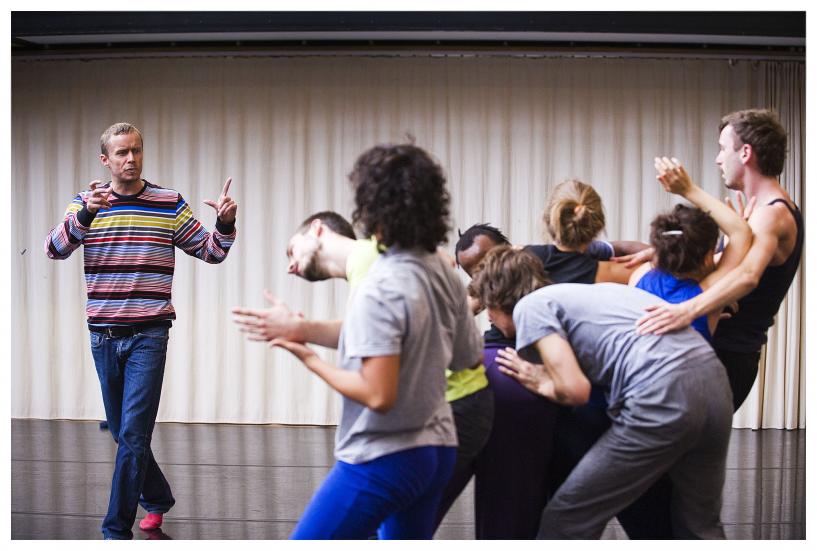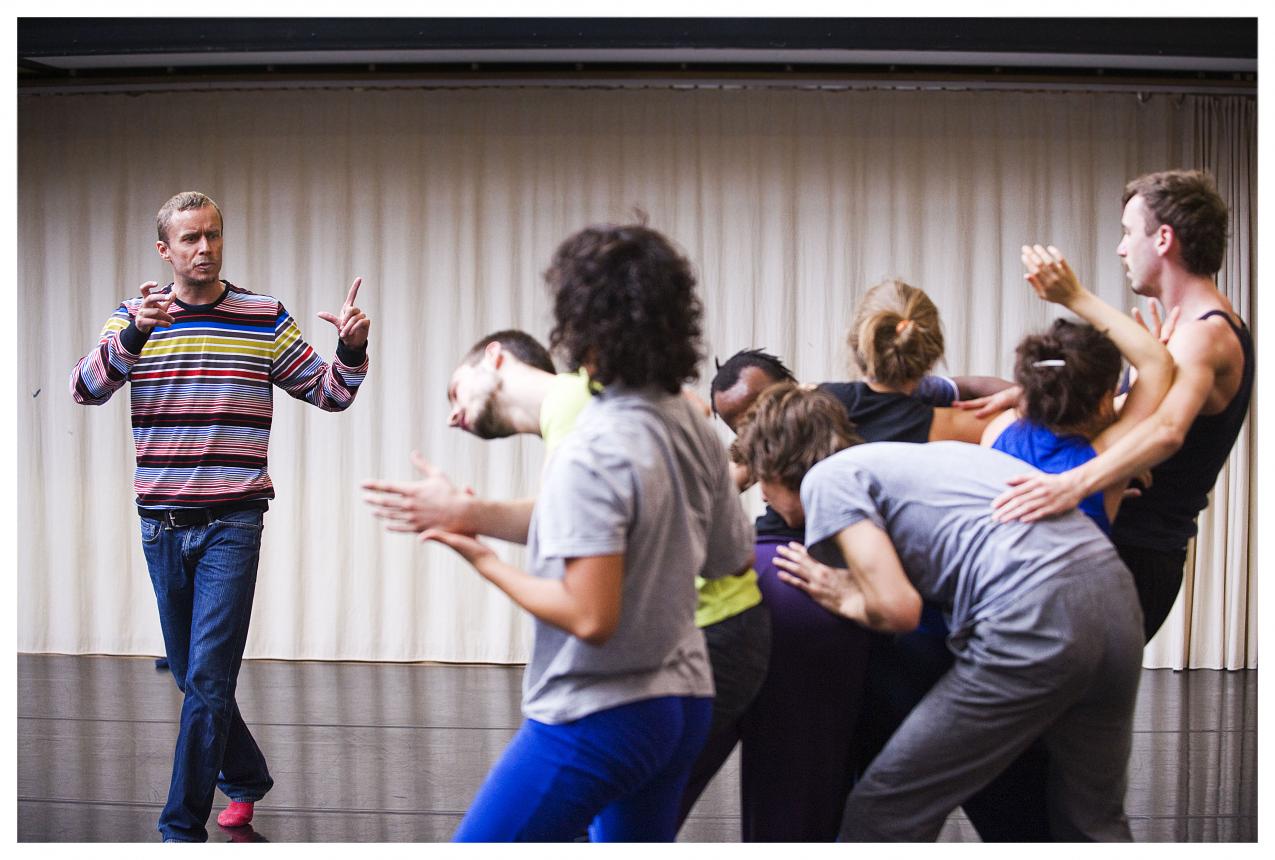Every joint of our body has its range of movement and there are countless combinations possible. The body possesses a great practical knowledge, that goes way beyond what the mind’s consciousness is able to process, about its anatomy and its mechanics, their actions and reactions, and their interactions with external forces (gravity, centrifugal- and centripetal force, another body etc.).
A complete picture/sense of the body rather than a list of cerebral criteria allows for far more complex movement (forms and qualities) because our conscious mind can concentrate only on a few things at one time while our body is able to combine a great amount of information in an ever changing, fluid sense of orientation, that can serve as a sensor for potential movement: physical intuition, creativity that comes into existence by mainly physical circumstances, no thought is necessarily formed between the moment of ‘inspiration’ and the execution of the movement.
In a progressive series of improvisational tasks with one or more partners, exchanging information sensorially, in touch or at a distance, we will take advantage of this phenomenon to create forms, rhythms, movement qualities and trajectories far more sophisticated than the ones our conscious mind could invent. We will be guided out of our habitual tracks, patterns will be distorted or overridden.
While we will practise to multiply and disconnect actions within our own individual body to create a sense of polyphony within it.
Another chapter of the work will be on composing the movement of a group, the attempt to create one single organism out of a group of individual bodies.
The movement of individuals within a group can be connected and united. Like the musicians of an orchestra playing together one piece of music the dancers in a space can create a unity by connecting rather than juxtaposing their movement. Shapes or positions in space can be related and given the visual equivalents of harmony or dissonance (vertical connections on the timeline) and the dancers can also create connections referring to past or future events, like melodies, rhythms and dynamics do in music (horizontal connections on timeline). It can be helpful to think about those connections in musical terms to help us find equivalents in movement, yet also here our instrument, the body, and another often underestimated agent: the group, prove to provide abilities to achieve interconnected, interactive movement structures that our individual, conscious minds could never have conceived of. We’ll be tapping into swarm intelligence/collective intelligence, swopping constantly between leading and following or doing both at the same time, taking the responsibility to initiate as well as the responsibility to play your part in the development of other people’s proposals or of unconsciously emerging structures, keeping an overview over the group composition while assuming your role within it. The connecting group structures allow the dancers to create a shared sense of musicality emerging from the fragmented contribution of everyone involved both in silence and in relation to an audible or imagined music.

